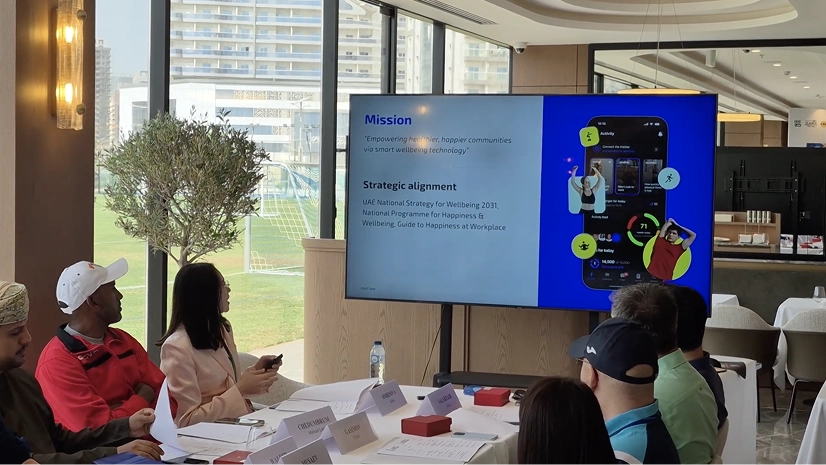Why Loneliness at Work Is a Performance Issue, Not a Private Matter
Most leaders treat loneliness as a personal mood problem that HR can address with a webinar or a coffee voucher. In modern organisations, loneliness is a systems problem that converts directly into missed targets, rework, and churn. When people feel unseen, they conserve energy, volunteer less context, and avoid intelligent risk. Decisions slow because nobody wants to be the first to commit. Quality drops because feedback becomes rare and brittle. And all of this happens while calendars look busy and Slack looks loud.
Loneliness is not about headcount around you. It’s the gap between the connection you need to feel safe and effective and the connection your environment actually supplies. Hybrid work widened that gap for many teams, not because remote work kills community but because we tried to copy old office habits onto new rhythms. The hallway buffer disappeared, but we never replaced it with rituals that do the same cognitive and social work. The result: people spend more time performing “availability” and less time doing the work that makes collaboration satisfying.
This article reframes workplace connection as an operating-system choice. It explains the neuroscience that links social safety to focus and creativity. It shows how to diagnose connection health through visible signals rather than vibes. It maps practical designs—spaces, schedules, and rituals—that build belonging without bloating meetings. And it offers measurement that respects privacy while proving ROI in retention, cycle time, and customer outcomes.
The Science of Connection: Why Psychological Safety and “High-Quality Connections” Unlock Focus and Innovation
Humans run on prediction. When your brain trusts the people around you, it relaxes its threat surveillance and frees energy for planning, memory, and creativity. Functional neuroimaging studies show that social safety dampens amygdala activation and strengthens prefrontal networks involved in working memory and error detection. The opposite pattern—uncertainty about how others will respond—keeps the body on alert. Vigilance narrows attention, accelerates fatigue, and makes even routine interactions feel costly.
Connection quality matters more than connection volume. A day of shallow check-ins and reactive messages can leave people lonelier than a quiet day spent in deep work followed by one candid conversation. Researchers call these “high-quality connections”—brief interactions that convey respect, presence, and mutuality. In practice, high-quality connections look like a manager who asks one precise question about your work and remembers the answer next week, a teammate who texts a useful example instead of a vague “any update?”, or a cross-functional partner who admits a constraint without shame so you can solve it together.
Belonging at work blends two layers: identity and competence. People need to feel they are valued as humans and that their contributions matter. Rituals that signal both—celebrating completions, not just launches; writing “decision receipts” that credit contributors by name; rotating facilitation so different voices lead—teach the nervous system that showing up leads to impact rather than to invisibility. Over time, those signals reshape behaviour: people volunteer sharper ideas, reveal blockers early, and recover faster from mistakes because relationships hold.
Recognising Workplace Loneliness Without Guesswork: The Operational Signals That Leaders Can See
You do not need a diagnostic questionnaire to see disconnection. It shows up in the way work moves—or stalls—through the system. Threads grow longer while decisions shrink in substance. Meetings multiply as trust falls; the organisation uses time as a proxy for confidence. Slack channels develop a layer of irony that protects people from caring in public. Retrospectives become theatre where nobody wants to be the first to name the real friction. Onboarding slows, not because hires lack talent but because they cannot find the human shortcuts—who to ask, what format earns a fast answer, how the team actually decides.
Calendars tell the same story. When connection is weak, people cram in status calls to feel less alone, then complain about meeting bloat. When belonging is strong, teams document well and gather with purpose. Asynchronous updates replace performative syncs. Deep-work windows survive because nobody needs to signal presence every ninety minutes. Look also at handoffs: if “what did I miss?” is the most common sentence in your org, connection isn’t doing its job.
Attrition offers a lagging signal. Exit interviews from disconnected teams repeat a pattern: “The strategy made sense; I just never found my place in it.” Watch for churn clustering among mid-career women, caregivers, and global colleagues outside HQ time zones. Those groups pay more for performative presence and are often first to disengage when norms fail.
Designing Environments That Lower Social Friction: Spaces, Channels, and Defaults That Make Connection Easy
Belonging grows where friction is low. In physical offices, that means legible space and sensory sanity. People need rooms that match the type of interaction: small, well-ventilated huddle spaces for intense collaborations; quiet libraries for shared focus; medium rooms with good sightlines and microphones so remote teammates are first-class citizens rather than postage-stamp ghosts. Plants, tunable lighting, and acoustic treatment reduce the micro-stress that drains patience before the important conversation happens.
In digital space, channel architecture is culture. Name channels by purpose, not by team—#design-review, #decision-records, #customer-voice—so work travels where it will be seen by the right minds. Pin living documents: a glossary that kills acronym anxiety; a “how we decide here” index; a rotating list of subject-matter helpers. Use notification gateways that batch low-urgency pings and reserve interrupts for genuine coordination. The best connection tool is the one that lets people be present where they are, not half-present everywhere.
Default behaviours carry more weight than slogans. Turn on captions in meeting tools by default. Record and transcribe sessions that make decisions, and link the transcript in the decision record. End meetings ten minutes early so people can follow up while context is fresh. These details look small; they are the connective tissue that keeps trust from tearing during busy weeks.
Social Architecture Without Social Pressure: Rituals That Build Belonging and Leave Attention Intact
Connection dies when it is delegated to ad-hoc happy hours. It thrives when micro-rituals thread through the real work. A weekly written stand-up asks three questions: what moved, what blocked, what help you offered someone else. The third item trains attention outward and normalises mutual aid. A cohort kickoff for new hires pairs role mentoring with a shared learning agenda—one customer story to watch this week, one decision record to read, one micro-contribution to ship—so belonging is earned through usefulness rather than through noise.
Cross-functional “listening parties” play anonymised customer calls or field recordings for thirty minutes with comments open. Because everyone starts from the same external truth, the debate that follows is warmer and shorter. Decision receipts—two paragraphs, not twelve—close the loop: what we chose, why we chose it, who we listened to, where to find the artefacts. Receipts prevent private lore from replacing shared reality and give people credit in the places future readers will visit.
Social time still matters; the trick is to make it optional, humane, and logistically fair. A short lunch walk after a heavy workshop beats a forced evening outing that punishes caregivers and long commuters. For remote teams, a monthly “show-and-tell” where colleagues demo something they learned—a shortcut, a client pattern, a fail they recovered from—creates genuine intimacy because it is anchored in craft.
Manager Practices That Turn Connection Into Momentum: Attention, Boundaries, and Feedback That Lands
Managers are the local weather. Their habits either condense connection into momentum or blow it away. Attention is the first resource. Great managers practice presence in one-on-ones: camera on if it helps, notes closed, one or two real questions asked early. They come prepared with specifics—“I saw how you reframed that objection on Tuesday”—because specific praise tells the brain, “You are seen for your craft,” which is the fastest route to belonging for high performers.
Boundaries are the second resource. Teams cannot connect when they are always sprinting. Managers who guard deep-work windows, who schedule breathing space after high-stakes meetings, who treat Slack like a tool rather than a siren—those managers create the conditions where thoughtful conversation can happen. They also prevent a common failure mode: trying to manufacture connection by adding meetings to an already overloaded week.
Feedback is the third resource. Delivered unpredictably or in vague terms, it erodes safety. Delivered regularly and anchored to behaviours and outcomes, it becomes a trust engine. The best managers decouple feedback from performance theatre. They ask for consent—“Can I offer a thought on that?”—and they check for understanding—“What did you hear?”—so that the conversation strengthens the relationship while it strengthens the work.
Making Hybrid and Global Norms Fair: Time-Zone Equity, Camera Culture, and Asynchronous Collaboration That Includes Everyone
Hybrid and global realities complicate connection—and, handled well, can deepen it. Time-zone equity means spreading the pain of early or late calls and relying on async for the rest. A rotating golden hour ensures the same region is not always bending sleep. High-quality recordings and transcripts with chapter markers mean remote colleagues can navigate quickly without scrubbing. Decisions do not live behind meeting walls; they are captured where search will find them.
Camera norms deserve honesty. Cameras help when nuance matters and when groups are small. They hinder when content is already written or when bandwidth or sensory load make video costly. A camera-optional culture with crisp documentation and clear comments respects neurodiversity and reduces the performative layer that often masks loneliness. Teams that pair camera-on workshops with camera-off reading blocks reclaim attention for the right moments and lower the social tax of every day.
Asynchronous collaboration is not absence; it is a different kind of presence. Written proposals with targeted comment windows, voice notes for tone-sensitive topics, and visual mockups people can annotate—all of these allow contribution from colleagues who think best in quiet or who live far from HQ. They also create a durable archive that reduces “what did I miss?” reflexes, which is one of the strongest behavioural markers of disconnection.
Onboarding as Belonging Engineering: Give People a Place in the Story Before the First Sprint
Loneliness spikes during role transitions. New hires arrive with energy and caution; the system’s shape in their first month becomes their internal model for “how safe it is here.” Onboarding that centres belonging does three jobs. It tells the real story—how value flows from idea to impact, which trade-offs define your market, where decisions stall and why—so people don’t waste months inventing folklore. It gives a map to people, not just to tools—who to ask for what, what format earns a quick answer, which channels are signal. And it grants early usefulness: a doc fix, a bug patch, a customer transcript tagged with insights. Usefulness is the most respectful welcome; it converts anxiety into contribution.
Cohorts multiply the effect. When new hires share a cadence—weekly demos of what they learned, a rotating facilitation role in a low-stakes meeting—they form bonds that outlast the ramp. Pair each newcomer with a buddy who models your healthiest norms: they block deep-work time, they write decision receipts, they leave ten-minute buffers. People copy what works; give them something worth copying in month one.
Measuring Connection Without Surveillance: Privacy-Respecting Signals That Leaders Can Act On
CFOs and CHROs will ask how you know connection is improving. You can answer without creeping on anyone’s inbox. Track operational signals: cycle time for cross-functional tasks, defect rates after handoffs, meeting load per shipped outcome. Watch the ratio of asynchronous decisions to live debates. In healthy systems, decisions move to artefacts over time, and sync becomes rarer and more targeted.
Use brief pulse checks that ask about clarity, energy, and belonging: “I can ask for help without penalty,” “Someone noticed my contribution last week,” “I know where to find the truth for my work.” Include a “helping given” item; people who have chances to help feel more connected. Pair pulses with qualitative snippets—“One moment this week I felt part of something”—to keep the human texture visible.
Attrition and hiring offer hard edges. Voluntary exits should fall among groups historically taxed by performative presence. Time-to-ramp should tighten as onboarding becomes belonging-aware. Customer metrics should respond, too: resolution quality improves when internal connection improves because empathy and memory travel faster through a trusted network. Publish results, including misses. Transparency is a connection act.
A Practical Path to Adoption: Start with Listening, Design Three Rituals, and Iterate in Public
Connection work fails when it appears as a campaign. It succeeds when it arrives as a set of small, stable practices that make the week feel saner. Begin with listening that respects time: ask three open questions in writing—what makes collaboration heavy here, what makes it light, what is one ritual we should stop or start. Then ship three designs in one quarter: a decision-receipt template, a weekly written stand-up that includes “help you offered,” and a calendar rule to end meetings at :50 with links to artefacts. Announce the experiment as an operating-system upgrade, not as a vibe change.
Pick one cross-functional flow—sales to success to support, or research to design to engineering—and map handoffs. Install receipts at each seam. After two sprints, hold a 30-minute blameless retrospective focused on connection: where did we wait for context; where did we duplicate questions; where did we surprise each other. The next quarter, add one social ritual that travels—listening parties, cohort show-and-tells, or a monthly craft clinic run by rotating volunteers. Never add a ritual without removing a meeting. Connection grows in the space you clear.
Narrate as you go. Leaders should post short notes explaining why a ritual exists, what it replaces, and how they are personally using it. When people see executives protecting buffers, writing receipts, and declining performative syncs, they understand that belonging is not an HR slogan; it’s the way work happens here.
Conclusion: Connection Is an Operating System Choice—Build It on Purpose and Performance Will Follow
Loneliness at work is not solved by pizza or posters. It is solved by design: by spaces that feel safe to think in, by schedules that leave room to breathe, by documents that carry decisions across time zones, by managers whose feedback lands and whose boundaries hold, by rituals that give credit and channel attention. Build these with craft and humility, and you get a system where people show up as adults, where courage and kindness coexist, and where performance becomes steadier because it rests on relationships strong enough to handle speed and stress.
The payoff is visible. Onboarding accelerates because the map exists. Handoffs tighten because receipts travel. Meetings shrink because context is written. Candidates come because friends say, “They do hybrid like they mean it.” Customers stay because they feel coherence in every interaction. And the people doing the work carry less of the quiet, grinding fatigue that comes from doing it alone.
If you want a practical accelerator, platforms like StayF can weave micro-recovery and shared challenges into the week so that connection has energy to stand on. But the core move is yours: choose connection as infrastructure. Treat belonging not as something that happens if you hire “culture fits,” but as something you construct with language, space, time, and respect. Do that consistently, and loneliness stops being a hidden tax. It becomes a vanishing cost—and in its place you’ll find attention, pride, and the kind of momentum that compounds.

What is the level of wellbeing in your team?
 Take the survey
Take the surveyWellbeing course for HR specialists
.png) Subscribe
Subscribe








.png)




